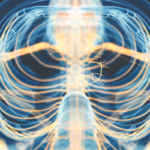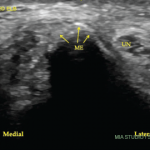(Reuters Health)—Non-invasive vagus nerve stimulation is safe and effective as an intervention for rheumatoid arthritis (RA), a small proof-of-concept study suggests.
The study enrolled 35 patients with active RA and an inadequate response to therapy with disease-modifying anti-rheumatic drugs (DMARDs). All DMARDS were discontinued four weeks prior to the trial. For the study, all participants were asked to wear a non-invasive vagus nerve stimulation device for up to 30 minutes daily over the course of 12 weeks.
Participants had follow-up visits at weeks 1, 2, 4, 8 and 12; the primary endpoint was mean change in the Disease Activity Score of 28 joints with C-reactive protein (DAS28-CRP) from baseline to week 12.
The mean DAS28-CRP score was 1.4 points lower at week 12 than at baseline, when mean scores were 5.3, the study team reports in The Lancet Rheumatology. Eleven out of 30 participants (37%) had mean scores of 3.2 or less at the end of the study, and seven patients (23%) had mean scores below 2.6.1
“The aim of non-invasive vagus nerve stimulation is to modulate a neurological pathway that helps control immune function,” says lead author Sara Marsal, MD, head of rheumatology at Vall d’Hebron University Hospital and an associate professor of rheumatology at the Autonomous University of Barcelona.
“In our clinical trial, this resulted in meaningful clinical improvement for patients that had failed conventional DMARDs,” Dr. Marsal says by email.
Overall, patients wore the device as directed on 94% of the study days. A total of 27 patients completed the study.
There were four adverse events, including one superficial skin abrasion at the point of contact where the device touched the ear. The other three events didn’t appear to be related to the device, and no patients dropped out of the study due to side effects.
Two main limitations of the study are the small sample size and the open-label design, the authors note.
The results need to be reproduced in a larger group over a longer period of time using a placebo group and including patients refractory to pharmacological therapy, says Alexandre Kanashiro of the department of neuroscience and behavior at Ribeirao Preto Medical School, University of Sao Paulo, Brazil.
If additional studies do confirm the safety and effectiveness of this intervention, then “the use of this non-invasive technology would be really encouraging for the treatment of RA and other chronic inflammatory conditions,” Mr. Kanashiro, who wasn’t involved in the study, says by email.



